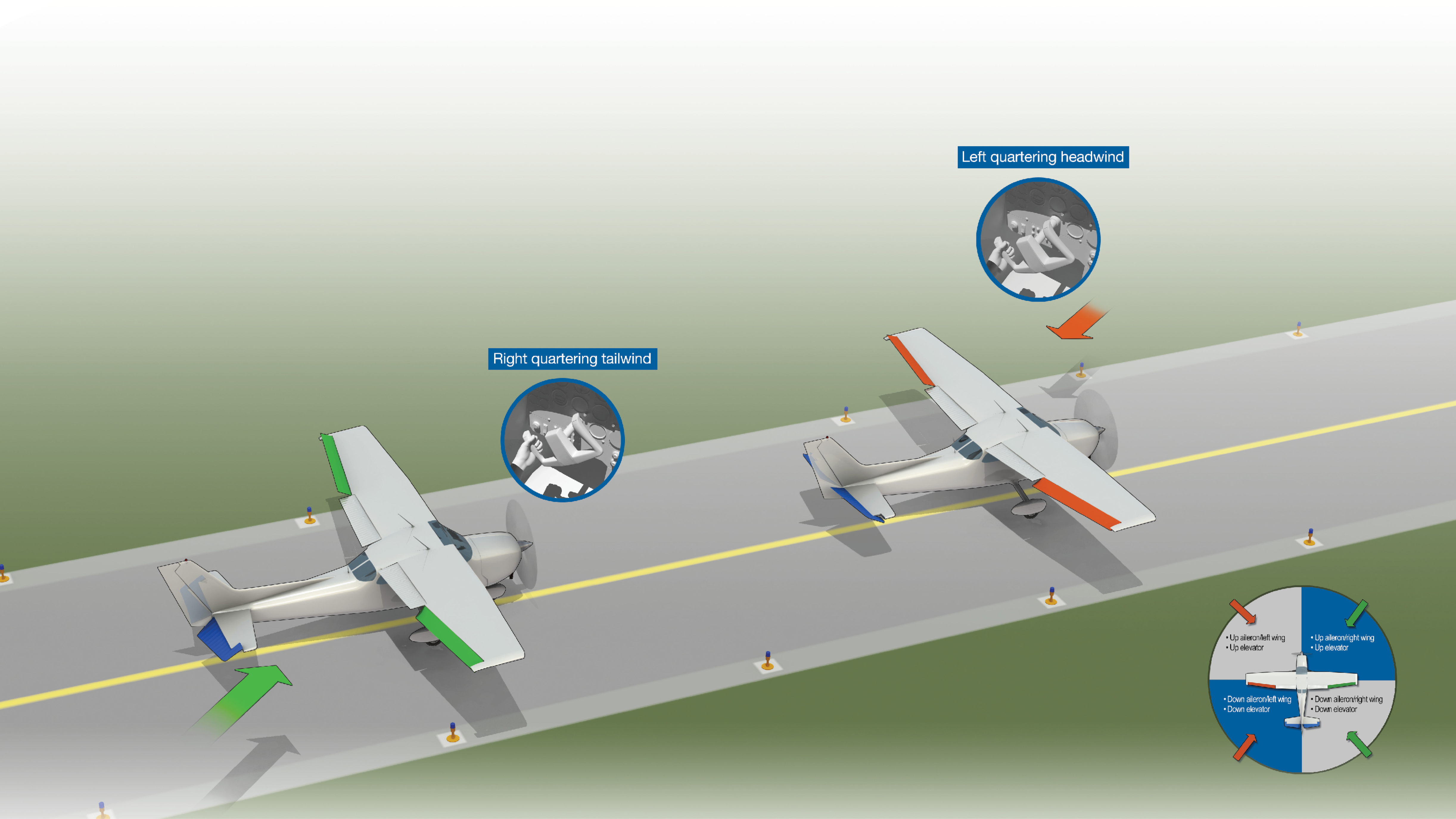Quartering Tailwind
Quartering Tailwind in aviation refers to a wind blowing from the side (crosswind) but also from behind (tailwind), creating a complex situation for aircraft handling, especially during taxiing and landing.
Direction
A quartering tailwind is a wind that is blowing at an angle, neither directly from the front (headwind) nor directly from the side (crosswind), but rather at a 45-degree angle or more from behind the aircraft.
Taxiing
During taxiing, a quartering tailwind can cause the aircraft to be pushed sideways and potentially lift the tail or wing, requiring pilots to use specific control inputs to maintain directional control.
Control Inputs
To counteract a quartering tailwind during taxi, pilots should:
- Elevator: Hold the elevator down to prevent the tail from lifting, especially if the wind is strong enough to cause a prop strike.
- Ailerons: Turn the aileron away from the wind, meaning if the tailwind is coming from the left, turn the aileron to the right, and vice versa.
Landing
Similarly, a quartering tailwind can complicate landings by increasing the ground speed and making it harder to maintain directional control during the flare and touchdown.
Wake Turbulence
Quartering tailwinds can also push the wake turbulence (vortices) of preceding aircraft into the landing path, requiring pilots to be extra cautious.

